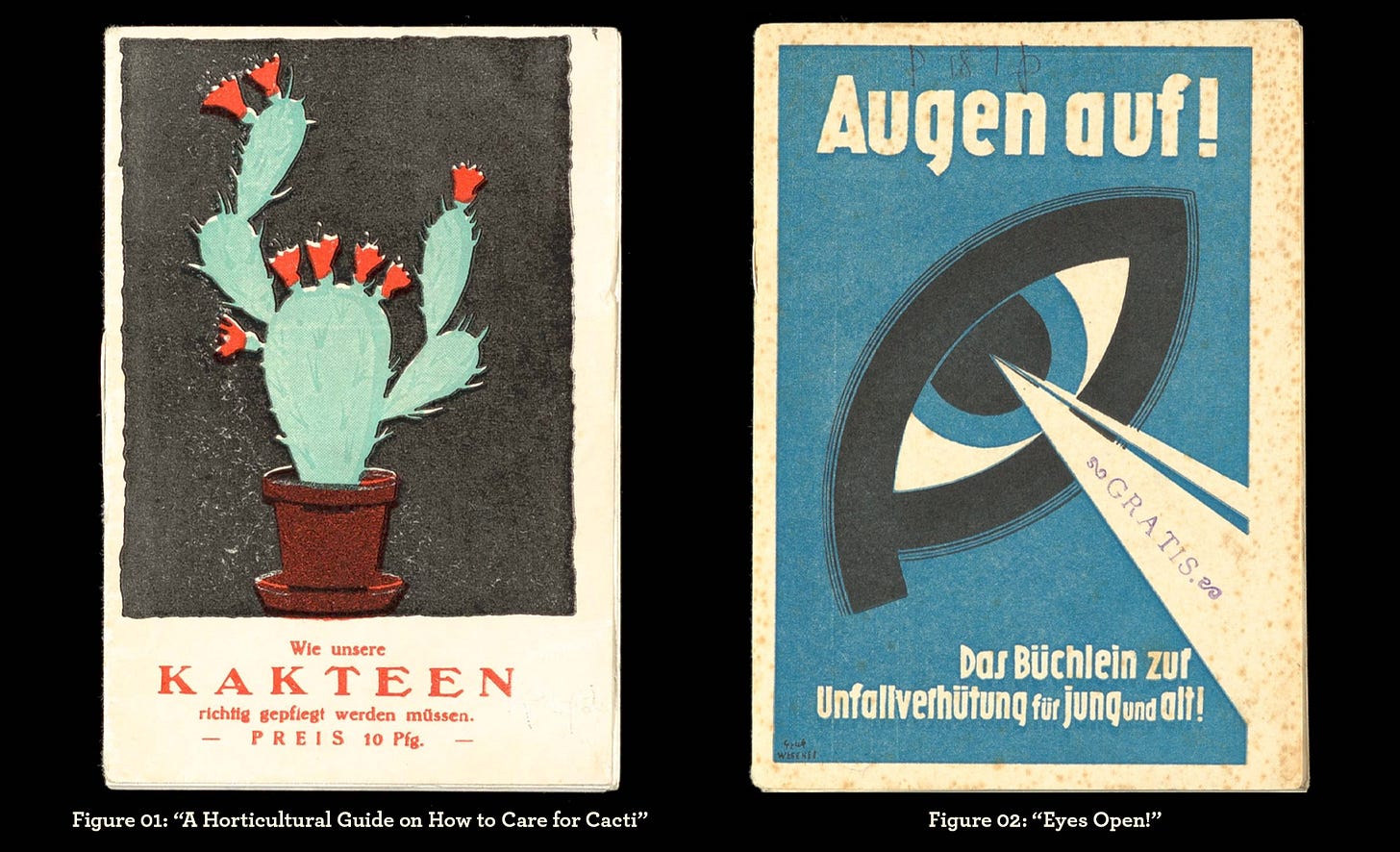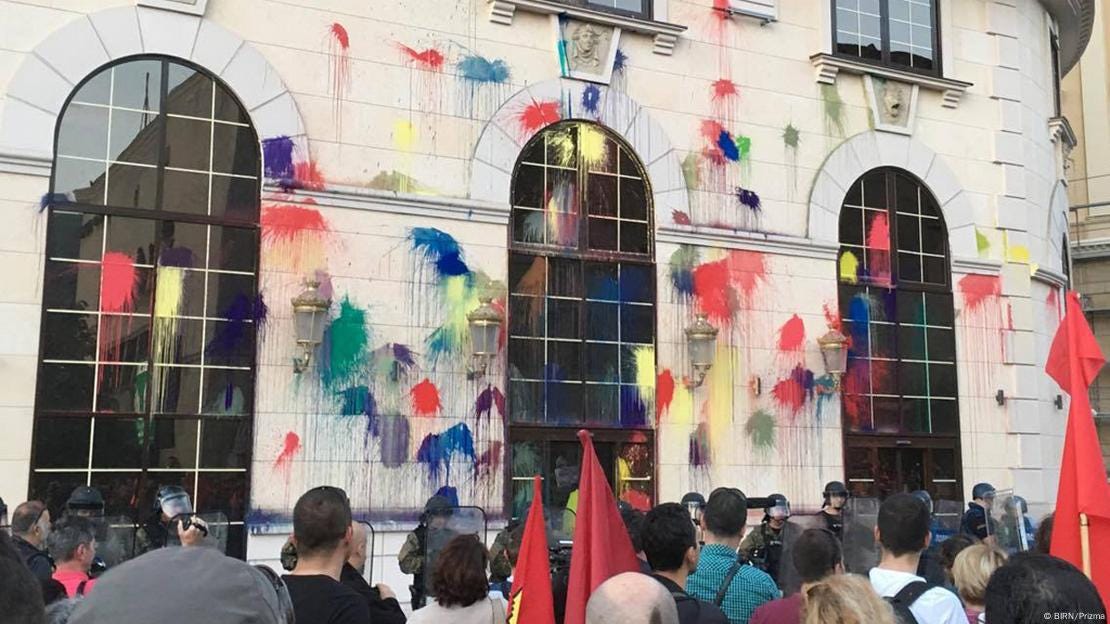I have found Substack to be a place of political refuge amongst the social media platforms where we’re constantly bombarded by the horrors of the state of the world. I have tried to keep this social space a bit separate from my attempts at activism that I do on other corners of the internet, in hopes of contributing to the relief that art and writing can bring to our souls and brains. But something happened this week.
Yesterday, a local native plant group that I follow sent out an S.O.S. on Instagram that I.C.E. (US immigration police) were at my neighborhood’s Home Depot, kidnapping workers in the parking lot in their military gear. Workers who have brown skin, families at home, work for minimal pay in the hot sun, and are truly the best humans amongst us. By the time I arrived, I.C.E. was gone, but the effects of their terror were felt everywhere. I decided I’d head back home and warn anyone I saw out in the open that these thugs were in our neighborhood and to be careful. As I made my way closer to home, a teenage boy and a man were working in a yard. I pulled my car over, rolled down the window, and asked the young boy to come over. I told him that ICE was at the Home Depot. The look of terror on his face and his whispering response of simply, “They are?” is something that will be burned into my heart forever. I don’t think I can accurately convey his worried expression here.
I grew up going to an Evangelical Presbyterian church. Although I no longer practice this, I feel lucky to have had the religious leaders that I did and feel minimally scared by the experience. When I was 14, like most Evangelical youth groups, I went on a “mission trip” to Reynosa, Mexico. It was my first experience of poverty on an extreme level, but it was also one of my first experiences in learning the life lesson that the most impoverished people are oftentimes the most generous people. I am positive that they had more of a positive effect on me than I did on them. That Reynosa community saved me. That trip rewired every cell in my body to care about fellow humans, especially the ones that were the most vulnerable, like undocumented immigrants here in the US. You cannot go on a “mission trip” with your church in Mexico and then call them animals and criminals after they cross the border into the United States.
So here I am, 26 years later, and we have an authoritarian government on the rise. The past month in Los Angeles has been ground zero for this administration to test their power. Los Angeles is home to thousands of immigrants from south of our border, and they have been abducting them in plain sight without a signed warrant from a judge, which is illegal. They’ve used excessive force on those without criminal charges, and they’ve deployed the National Guard on US citizens. They’ve gassed our US senators, they’ve thrown another senator on the ground for questioning their methods, and they’ve shot rubber bullets and flash bangs towards my direction while my husband and I were in a crowd of fellow Angelenos using our voices against the madness.
A Call to Every Graphic Designer
If you are a graphic designer, I urge you to muster your courage and take a stand against this terror using your skillset. Our abilities have the power to educate, to inform, to warn, and to empower. Use them. If you're wondering when the right time to join is, it's now.
A Few Designers Who Have Led the Way
The Berkeley Political Poster Workshop
In 1970, the Ohio National Guard killed four students at Kent State University while at the same time, the US began its invasion of Cambodia, which continued the horrors of the Vietnam War. This ignited a group of student activists at the University of California, Berkeley, to use art as a protest weapon. The Berkeley Political Poster Workshop began churning out prints on the backs of used white computer paper using hand-pulled silk screening methods. Almost all of the posters in the collection are by unidentified creators.
Malaquias Montoya
Art influences artists, and these posters were no exception. The Berkeley Political Poster Workshop was strongly influenced by Malaquías Montoya, a leading figure in the Chicano Art Movement and a lecturer at Berkeley, who held printmaking workshops nearby.
Montoya was raised by a single mother in a family of migrant farm workers in California’s Central Valley. Montoya gained prominence for his social justice silk screen printed posters in the 1960s-70s that exposed the realities of marginalized communities.
“Through our images, we are the creators of culture, and it is our responsibility that our images are of our times - and they be depicted honestly… we must not fall into the age-old cliche that the artist is always ahead of his or her time. No, it is most urgent that we be on time.” - Malaquias Montoya
Amos Paul Kennedy, Jr.
Friends recently gifted us a book about the incredible screen-printer Amos Paul Kennedy Jr. Amos is known for his type-driven messages of social justice and Black power. One critic noted that Kennedy is "...unafraid of asking uncomfortable questions about race and artistic pretension."
Hidden Writings
The word Tarnschriften means ‘hidden writings’. Between 1933 and 1945 as a form of political resistance to Nazi rule, over 1000 publications were produced with hidden messages in an attempt to overthrow the Hitler dictatorship.
Many of the Tarnschriften produced were expertly disguised as everyday items, such as advertisements and articles tucked into information manuals. Another form of sneaking information into the communities could be found in everyday items such as packets of seeds and tea.
Figure 01: “A Horticultural Guide on How to Care for Cacti” concealed articles on the struggle for the working class and how to overthrow Hitler.
Figure 02: “Eyes Open! The Little Book on Accident Prevention for Young and Old”. The first five pages offer medical guidance on how to treat minor accidents, while page 6 reveals its true contents.
Figure 03: Packet of tomato seeds with a hidden publication
Figure 04: A real Tea Sample with a small hidden booklet
A Colorful Revolution
In 2016, mass non-violent protests began in the Republic of Macedonia against authoritarianism and corruption of the republic’s regime by color bombing government buildings as a way to express their anger. The results of their protests led to more engaged citizens and laid the groundwork for future democratic reforms.
Artistic director of their revolution, Anna Krukulj said, “These are modern times, and we use color, not weapons. If we take down the regime with color, that is art.”
Thanks for being here this month. Amongst all of the chaos above, it makes times with friends and family even sweeter, and I’m grateful for those in my life that remind me that beauty is still everywhere!
Love,
Beth














This is it. This is the call. I’ve been feeling a pull to do something and haven’t been able to land on what would be most helpful, but I’m learning that it doesn’t have to be the most anything, it just needs to BE. RIGHT NOW.
This was incredible read!! Beth.